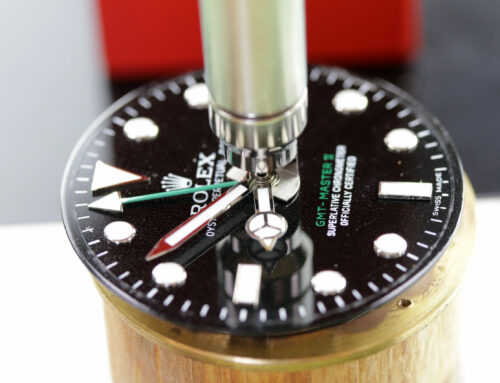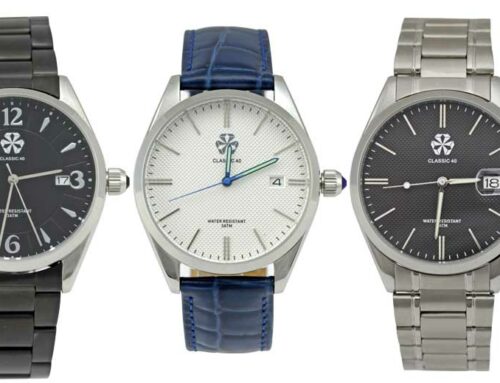Your dial foot is bent or entirely missing and you need to put a new one on to put your watch back together; what now? This milling tool is great for cutting out just enough of the dial to put a new dial foot on flush with the dial back. Here’s how to use it.
The milling tool comes with two different movement/dial holders for a variety of sizes, as well as an assortment of brass dial feet and super glue to attach the feet to the dial. The blade is designed to cut soft metal (like brass – commonly used for dials) as it is rotated to create a perfect circle cutout. This blade is removable and can be replaced when it is worn down.
First, get your dial ready and place it in the movement holder with the backside facing up. For the best support of the dial, place it in a way that the dial foot location is over the end of the movement holder. The additional support from the holder’s “posts” will help prevent the dial from warping if you press too hard while milling.
Line up the cutting blade with the dial foot location, and using the plunger gently lower the blade to the dial and begin turning the plunger to rotate the blade. You will need to hold the movement holder with one hand to help stabilize it and prevent it from moving. You don’t need a lot of pressure – you don’t want to bend the dial! Keep rotating until you have milled about 1-2mm (the thickness of the dial foot head).
After you have cut enough, rotate the blade in the opposite direction to remove any burs that might have formed while cutting.
To attach the dial foot you’ll need super glue, an oiler or applicator, and tweezers. With your applicator (an oiler works really nice) place a small amount of super glue on the dial in the cutout for the dial foot. Using your tweezers, put the dial foot in the cutout and press down gently.
The new dial foot is installed and needs only a minute or two to dry. Before putting your dial on your movement, be sure to give it some extra time to cure.
The benefit to using a milling tool is that your don’t need to solder the foot and potentially damage your dial, and having the dial foot head flush with the dial doesn’t add any extra height which can be a problem with your movement – it might not fit correctly.

















Question: wouldn’t milling a 1-2mm aperture to accommodate the foot “head” penetrate the dial? Most dials are .5mm. Thanks!